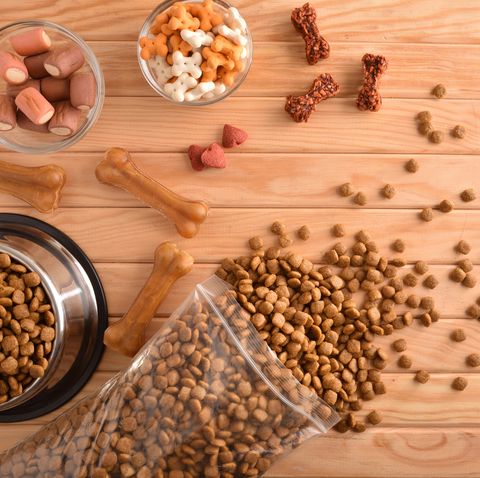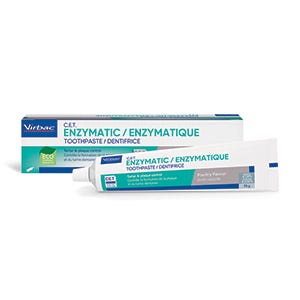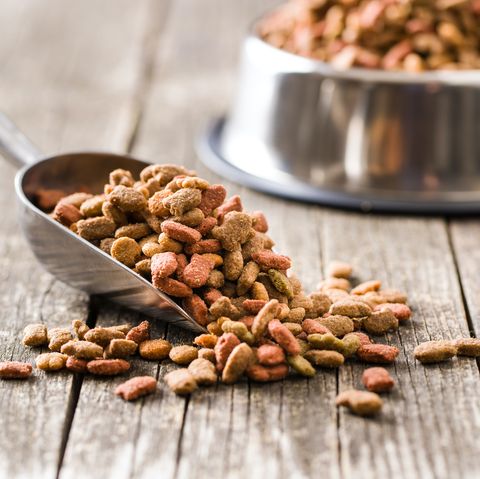Vet Reveals 15 Ways To Save Money On Your Pet
Many households are struggling to afford rising pet care costs. From soaring vet bills to dog dental fees, inflation has hit the price of pet ownership.
According to My Family Vets, estimates suggest dogs can cost as much as £30,000 to keep, feed and care for over the course of their life. Looking for some money-saving tips? As the cost of living continues to rise, we speak to the experts to find out how households can keep low.
Keep reading for everything you need to know…
1. Keep up to date with parasite prevention
Prevention is better than cure for many reasons. From fleas to ticks and lungworm, it’s much cheaper in the long run to prevent these from becoming an issue. Treatment for lungworm, for example, can cost as much as £2,000.
2. Ensure your pet is vaccinated
Ensuring your pet is vaccinated is an essential part of being a responsible pet owner. The experts recommend annual vaccinations to make sure your dog’s immune system is always prepared in its constant fight against diseases.
3. Measure food carefully
“One in 14 dogs in the UK is obese, which means they’re more likely to suffer from expensive-to-treat conditions such as arthritis, breathing problems, heart disease, diabetes and certain types of cancer,” Dave Tweedle, who works for the My Family Vets, says.
“It’s really important to measure your dog’s food, rather than guess. This is likely to save you money on food in the short term and vet bills in the long term. It may also help your dog live longer.”
Remember: Giving your dog too many treats is another common reason why they may put on weight. Ensure your furry friend has proper meals and only give treats in moderation.
4. Get regular health checks
Regular physical examinations by a vet or nurse can pick up subtle signs of discomfort or illness. Dave suggests putting your dog though an MOT twice a year to check for clues that something might not be right. Whether it’s an ear infection or skin irritation, you will save money in the long-term by treating it early.
5. Keep their teeth clean
“It’s reckoned around two-thirds of dogs over the age of three suffer from periodontal disease, which is an infection of the tissues surrounding the teeth — and expensive to treat. It starts with plaque forming and this thickens to become tartar,” explains Dave. “The best way to prevent tartar build-up is through daily brushing with a special toothpaste.”
6. Avoid unnecessary purchases
From expensive dog coats to designer bedding, a simple way to cut back costs is to avoid unnecessary purchases. Invest in better quality items that will last longer, including light-up leads to keep them safe on walks and raincoats for winter.
7. Shop around for pet insurance
Shop around for the best pet insurance that meets your needs. Dave says: “Unplanned veterinary treatment can be expensive and good insurance will cover everything from out-of-hours emergencies to cancer therapy. Just do your research first, and always compare policies.”
8. Learn how to groom your dog at home
Grooming your dog regularly is vital to ensure they stay clean, healthy and comfortable. Clipping their nails, cleaning around the eyes and trimming their coats helps to remove dead hair, skin, dandruff and dirt.
Every dog breed is different and has different needs when it comes to the methodology and frequency of grooming so it’s important to do your research on your dog first. If in doubt, call a local groomer or vet and ask for their advice on how regularly you should groom your dog and if there are any hazardous areas to be aware of for their breed.
Read our guide on how to groom your dog at home.
9. Make your own DIY dog toys
“Commercial toys are expensive and don’t always last long. There are loads of ways to stimulate your dog using things like cardboard containers, tea towels and old plastic bottles,” suggests Dave.
10. Check if you qualify for low-cost treatment
Charities, including the PDSA, Blue Cross and RSPCA, offer some pet owners free or subsidised treatment. To find out if you are eligible, visit their eligibility checkers online. If you are worried about paying for veterinary care, speak to your vet about payment plans and tailored treatments.
11. Get your dog neutered
Neutering improves the overall health of your dog, while also preventing uterine infections and breast tumours. While most dogs will give birth without veterinary help, caesarean sections are sometimes needed — especially in flat-faced dogs.
12. Consider a pet food bank
Pet food banks provide a supply of free pet food to people in financial hardship, potentially helping prevent animals from being handed into rescue centres or simply abandoned. If you are struggling to afford pet food, it’s a good idea to consider visiting your local pet food bank. See here for a full list.
13. Learn minor healthcare
“You don’t always need to rush to the vet if your dog’s not 100{95b18eb6fc4f42efd0d92738dfc3fb79fde21da267a711ecdf0381147c27bb86}. It’s often fairly simple to treat minor issues such as bee and wasp stings and mild diarrhoea, or to clip nails and remove ticks,” says Dave.
“If you’re worried about your pet’s health and not sure if you need to see a vet in person, try an online consultation first.”
14. Keep an eye out for free poo bags
Some councils give away free poo bags at libraries and other facilities, so keep an eye open for any you can pick up. “It’s also worth shopping around as their price varies — and don’t forget to check the price of nappy bags as they do just as good a job,” adds Dave.
15. Keep dangers away from pets
“One of the most common reasons dogs need expensive emergency treatment is swallowing something toxic. Chocolate, raisins, plants, household products and human medications are among the main culprits. In many cases, dogs get a hold of these things because their owners have failed to keep them out of reach. Don’t make the same mistake.”













